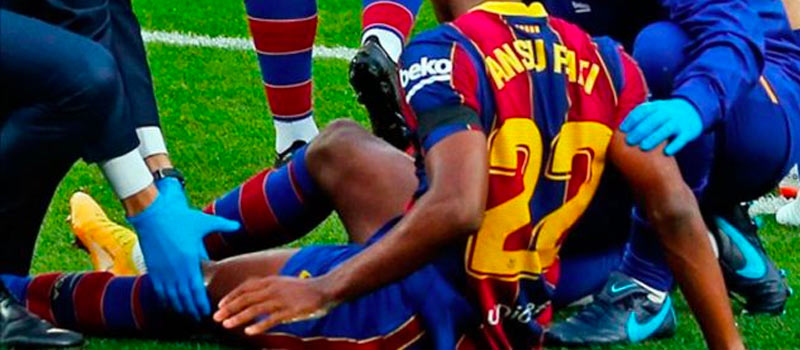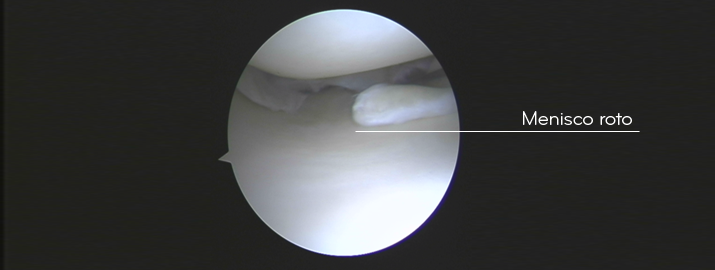9 November, 2020
Ansu Fati’s meniscus injury: What happened and what are the treatment options?

The meniscus is a structure of elastic consistency that is located between the femur and the tibia and that acts as a shock absorber. It is specially shaped like a crescent so that the femur fits perfectly with the tibia. We have 2 menisci in each knee, one external and one internal. The most common cause of meniscus injury is a knee twist, as happened on this occasion. Ansu Fati’s meniscus injury occurred when, his foot was on the ground and due to contact with the opponent, the knee turned in an unnatural way, causing the consequent meniscus injury. It is for this reason that footballers, who anticipate a contact, try to lift their feet off the ground. By doing so, they avoid this type of injury or even more serious ones associated with other structures of the knee. As such, a meniscus injury can be associated with a tear of ligaments (anterior cruciate, internal lateral) and / or the articular cartilage.
TYPES OF MENISCUS INJURY
The meniscus that is most frequently affected is the medial meniscus, specifically the posterior part. However, any part can be injured, depending on the movement performed. Due to the special form of blood supply of the meniscus, there are 2 types of ruptures: those located in the central area (where blood does not reach and the lesion must be resected, since it does not heal) and the more peripheral ones (where blood supply does reach and it is possible to suture and preserve).
When ‘the entire meniscus’ is torn and it has to be resected, the pressure between the femur and the tibia increases by up to 300%, causing wear of the knee cartilage in the medium term and consequent early osteoarthritis. This is why, whenever possible, we must try to preserve the meniscus and suture it. Currently, the meniscus can be sutured by arthroscopy without any problems, allowing the natural ‘shock absorber’ of the knee to be preserved.

CONSEQUENCES OF A MENISCUS EXTRACTION
It all depends on the amount, and especially, the area of the torn and resected meniscus. The more resected the meniscus, the more the possibility of medium and long-term sequelae. If, over the years, there is pain and limitations due to cartilage wear, then there are other treatment options: meniscal replacement with artificial collagen implants or a meniscus transplant with donor grafts. There are also novel treatments for focal cartilage lesions, such as the one used with the patient’s own stem cells and BST-Cargel®.
WHENEVER POSSIBLE, THE MENISCus MUST BE REPAIRED
Without a doubt, whenever possible, the meniscus must be REPAIRED (Save the meniscus!). As we have said, the lesions in the periphery of the meniscus have the capacity to heal due to the blood supply that reaches them therefore, you must ALWAYS try to sew them together. On the other hand, the injuries that occur in the central part of the meniscus do not have the capacity to heal and must end up being removed. If we can preserve the meniscus in its entirety, we will avoid long-term sequelae due to the lack of “cushioning”. But, all this depends on the type of meniscus injury that has occurred, not on the technical capacity we have to repair it or not.
Currently, with arthroscopy, we can perform all kinds of repairs without any complications and with all the advantages of this technique (less pain, faster recovery, less scarring).
“If we can preserve 100% of the meniscus, we will avoid long-term sequelae due to lack of cushioning”
Imagen: fcbarcelonanoticias.com


